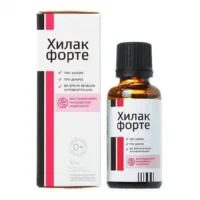Description
Rabeprazol-Zdorovye (Rabeprazole) Coated Enteric Tablets 20 mg. №20
Ingredients:
- Each tablet contains 20 mg of Rabeprazole.
Dosage:
- The recommended dosage is one tablet daily before a meal.
Indications:
- Rabeprazol-Zdorovye tablets are indicated for the treatment of gastroesophageal reflux disease (GERD), duodenal ulcers, and Helicobacter pylori eradication.
Contraindications:
- Do not use in case of hypersensitivity to rabeprazole or any other component of the formulation.
Directions:
- Swallow the tablet whole with water. Do not crush or chew the tablet.
Scientific Evidence:
Rabeprazole, the active ingredient in Rabeprazol-Zdorovye tablets, belongs to the class of proton pump inhibitors (PPIs). PPIs work by irreversibly inhibiting the hydrogen-potassium adenosine triphosphatase enzyme system in the gastric parietal cells, leading to a reduction in acid secretion. Clinical studies have shown that rabeprazole is effective in healing and symptom relief of GERD and peptic ulcers.
Additional Information:
Rabeprazol-Zdorovye tablets have a coated enteric formulation that helps protect the active ingredient from degradation in the acidic environment of the stomach, allowing for targeted release in the intestine where it is absorbed. This formulation enhances the bioavailability and effectiveness of the medication.
Compared to other PPIs, rabeprazole has been reported to have a faster onset of action and a longer duration of acid suppression, making it a preferred choice for the management of acid-related disorders.





